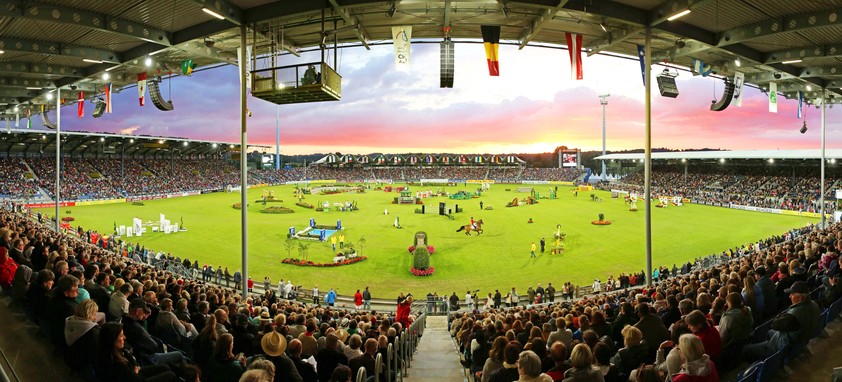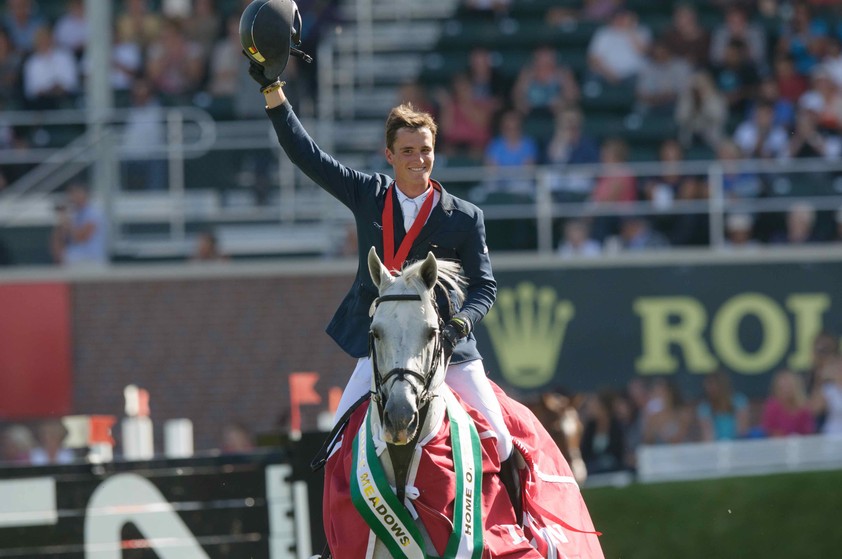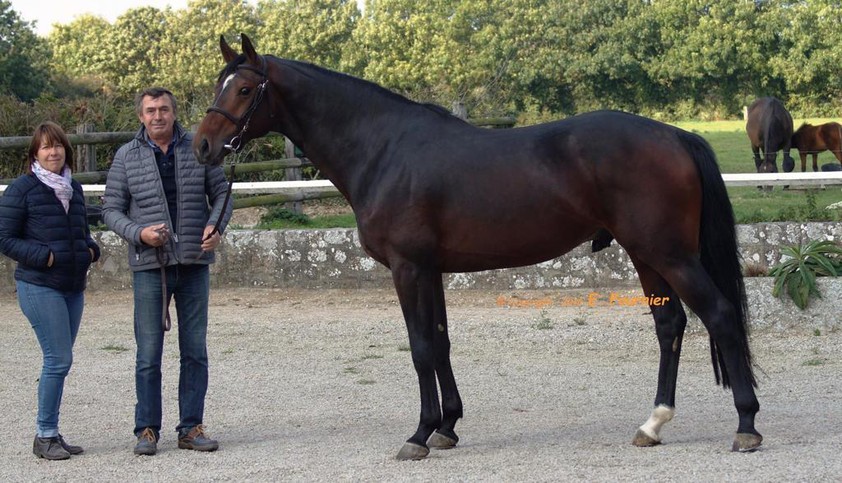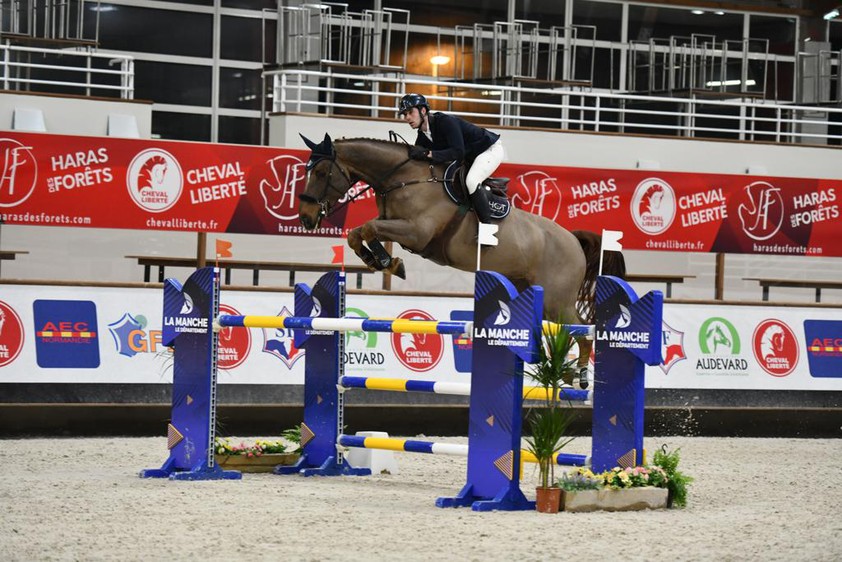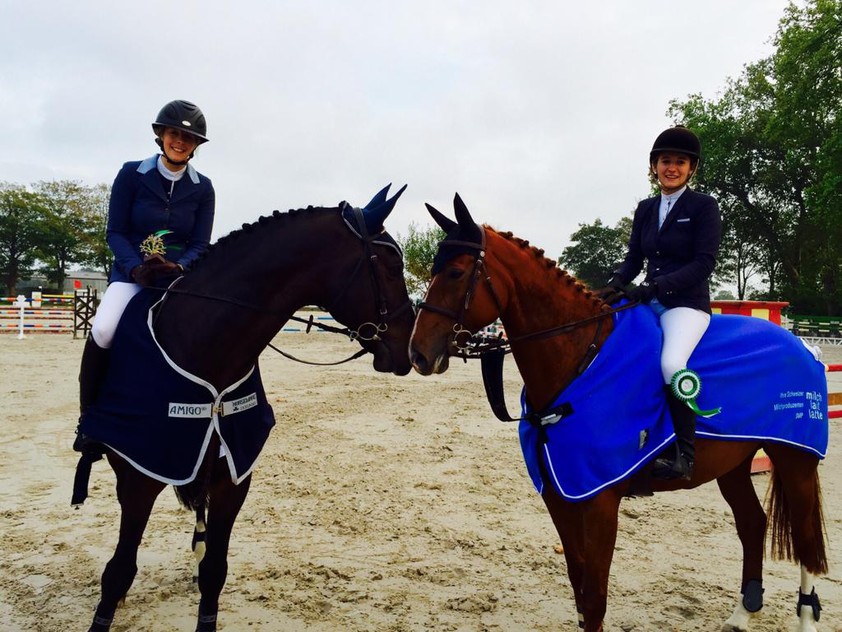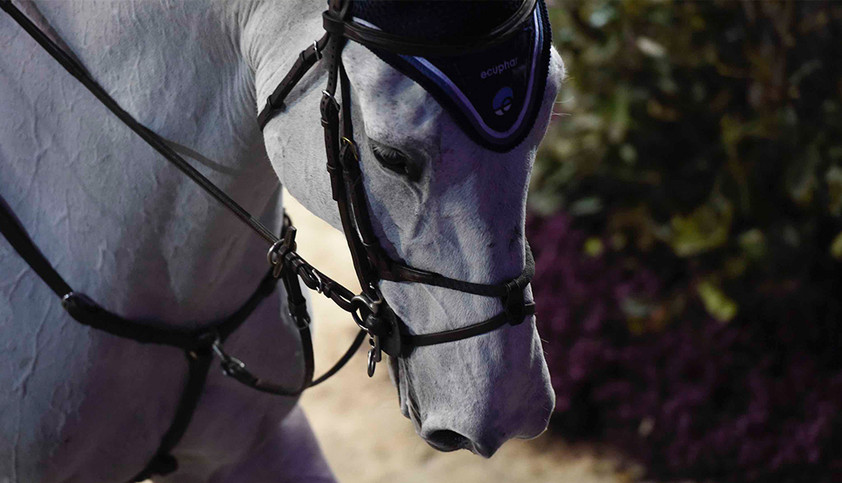ROLEX GRAND SLAM OF SHOW JUMPING – CONFIRMED DATES FOR THE MAJORS IN 2021
The World Equestrian Festival, The CHIO Aachen (RESCHEDULED)
The CHIO Aachen 2021 has been rescheduled and will take place from Friday 10 until Sunday 19 September. For further information about the CHIO Aachen 2021, please visit https://www.chioaachen.com/
Spruce Meadows ‘Masters’
The dates for the Spruce Meadows ‘Masters’ 2021 remain unchanged and the show will take place from Wednesday 8 until Sunday 12 September. For further information about the Spruce Meadows ‘Masters’ 2021, please visit https://www.sprucemeadows.com/
CHI Geneva
The dates for CHI Geneva 2021 remain unchanged and the show will take place from Thursday 9 until Sunday 12 December. For further information about CHI Geneva 2021, please visit https://www.chi-geneve.ch/
EXCLUSIVE INTERVIEW WITH BELGIAN RIDER OLIVIER PHILIPPAERTS
What are your plans for the rest of 2021 and what would you ultimately like to achieve?
I would like to win another 5* with Legend [H&M Legend of Love]. She’s a great horse, and I’ve had her for a long time. She’s been unbelievable for me, the amount of success and the number of good rounds we’ve had has been really incredible. Even last week – she’s 15 now – she still tries to give her best each week at every show. So, at some point throughout 2021, I’d love to achieve another 5* Grand Prix with her, so hopefully that is something we’ll be able to do.
What are your plans for 2021?
Last year was obviously a massive setback, but this year, we’ve started on the right track. I went to Oliva Nova in January to prepare the horses for the season. Then came Doha, and recently I have been getting ready for The Dutch Masters. We’re looking forward to the season, and we fully believe that this season is going to be fantastic, and that it will be yet another step forward for everyone involved. There are lots of competitions coming up, including a few Rolex Grand Slam of Show Jumping Majors and of course the Tokyo Games, which we’re all trying our best to get to. So, these are the main targets for the year, and right now I’m trying to put together the best programmes possible to achieve our goals.
Which horses are you most excited to be competing with this year?
I’m very lucky at the moment, I’ve got a couple of very nice horses. I have some experienced horses like Legend of Love, and Extra [H&M Extra], who I’ve had for a couple of years. I’ve also got a new horse, called Blue Diamond [Le Blue Diamond V't Ruytershof], who jumped his first 5* Grand Prix last week in Doha, which I was very happy about. I really believe that this could be a horse that can compete consistently at 5* level, I’m really looking forward to this year, and to trying to get him to compete at the top of the sport.
How positive do you believe the Rolex Grand Slam has been for the sport of show jumping?
I think it’s been an incredible success that Rolex has brought the Grand Slam into our sport. This is the best way for us to compare our sport with, for example, tennis. Everybody in the world recognises the Grand Slams as the biggest events of the year, so to be able to translate that across to our sport in order to explain to someone who is not in the horse world what the Grand Slams are, it gives our sport an extra boost. As a rider, those shows are the most important of the year, and as true athletes and competitors, we strive to have those wins on our list of accomplishments.
Do you have a favourite out of the Majors, is there one that stands out as the competition that you really want to win?
Of course, everyone has their favourites. Spruce Meadows is always going to be very special to me, as when I won there, it was a truly unique moment. On the other hand, Aachen is incredible, it’s close to my home, I’ve been going there for a long time, my father competed there so many times and I’ve also competed there, so those two shows are the most important of the year to me.
What have you learnt over the course of the last year, about yourself? And what positives can you take from what’s been a very unusual and tricky year?
I think the biggest difference was that the year before we competed in so many competitions, perhaps too many. It’s great that there are so many 5* competitions, as this gives everybody a better chance of winning, but from a personal perspective, I think from now on I’ll select fewer 5* competitions to compete in. This will give me the opportunity to go to these shows, and really focus on those specific competitions. Sometimes, due to the sheer number of competitions, we’re competing week in week out, and flying back and forth across the world, which maybe is slightly excessive. Over the last year, I’ve learnt that it would be better to focus on a smaller number of shows, to try and arrive ready, with the right horses.
Also, I think when you have so little time, like I did, unknowingly, you make small errors that you don’t see. Now that we’ve all been at home, we’ve been able to reorganise ourselves, so that everything is set up for the coming season. We try to buy young horses and bring them through to the top level, so we’ve tried to create a good, solid structure to enable this, so that even when I’m away at shows, we still have a good opportunity to find the best young horses. Time in this sport moves so fast, so it’s imperative that we have horses for the future.
BREEDERS UNCOVERED
Interview with the Nöel family (Élevage du Thot)
In this edition of Breeders Uncovered, we speak to Margrith and Florian Noël from “Le Thot” Stud, which is located in Normandy, France – www.elevage-du-thot.com. We would also like to thank Judith Noël for making the interview possible.
What is your earliest equestrian memory?
Margrith Noël:
My father was part of the Swiss Cavalry, and each member had their own saddle and horse at home. I was young, and when his horse had gone, he used to hang his saddle at the bottom of the stairs. Me, being the young child I was, at around four or five, I used to spend a lot of time climbing up on this saddle and pretending to go horse riding.
Florian Noël:
I was born around horses and having two older sisters, who were passionate about horse riding, my parents always wanted me to follow in their footsteps. On Wednesdays or Saturdays, my parents would force me to prepare a horse or a pony, by brushing them, but I really didn’t like doing it. I learnt to ride when I was young, as this was the ‘normal’ thing to do when you’re young in our family. I always went with my sisters to camps during the summer, where we did a lot of riding, and other activities. Each time we went, I’d bring my bicycle, so I’d actually end up spending more time cycling around the equestrian centre than horse riding. I also had a friend that owned a pony, and we used to race each other in fields and on the beach. So, we spent more time racing than doing equestrian.
What is the proudest moment of your career so far?
Margrith Noël:
For us as a family, it was Ideo du Thot, a horse who won the World Cup in Las Vegas in 2007. To have a horse of his level, that was truly exceptional, a true one-of-a-kind horse. This was an incredibly proud moment for us. As a mother, it has made me very proud to have three children who are passionate about riding, and when they compete on our own horses that we’ve raised, that makes me especially proud.
How did you get into the breeding side of the sport?
Margrith Noël:
It all started when I married Jean-Francois Noël, whose father was very involved in breeding horses. His father was a Normand cattle breeder, who also had a few mares, and he started getting involved when he was very young, breaking-in the horses. We developed the business little by little, buying a few foals, and trying to develop them, and by crossing them with our own bloodlines. This was how the breeding business grew, and it was like this that we bought the bloodline of Ideo, which we then crossed with ours, which enabled us to continue to grow. It’s interesting to see how far we’ve come, because we started just the two of us, with three horses; that was 35 years ago, and now we have been able to become a well-performing and large breeder.
Could you summarise what the main elements of breeding a top show jumping horse are, what is the background behind it, how do you decide which pairings to breed, etc.?
Florian Noël:
It’s a mixture between physical and mental attributes, and the horse’s education. The horse has to be well raised, well-fed, and very mentally strong. The breaking-in of the horse, and the development is also integral in breeding a top-class horse. It’s also very important to have a good base, which facilitates having horses that are straightforward to ride, and straightforward mentally. It’s very central to have a good mare, because once you have a good mare, then the choice of father is wide open, so it’s most vital to get the choice of mother right.
Has there ever been a time when pairings have had unexpected results?
Margrith Noël:
Yes, Samourai du Thot, who was once the best French eventing horse on the world rankings. This horse came from a mix that we didn’t believe would amount to such a world-class horse. The mother was a good, complete horse, but not a particularly well-known horse, but a horse that had a lot of sense; we paired her with Milor Landais, and this led to a real surprise in Samourai du Thot.
Florian Noël:
We sometimes try to get stallions that don’t necessarily tick all of our boxes, that are sometimes quite ordinary. This gives us the opportunity to do something different, like mixing them with pure bloods, Anglo-Arabs, to really get something unique.
The partnership between horse and rider is clearly important; is that something you’re looking for when you sell to new owners, or when they ride the horses themselves?
Margrith Noël:
It is something that we look for, but often, the way the market and the industry works, that’s not something that we have full control over. We do a lot of business with traders, so this makes things complicated sometimes, when there could be a client who doesn’t fit well with the horse, we can’t take the horse back and replace it with another, because when we have 12-15 foals, they’re all different.
Florian Noël:
We do try to produce and develop horses that are easy to ride and deal with, as lots of people are searching for more or less the same thing in a horse. They’re looking for a high quality, chic, well-ridden horse, scope as the more well-ridden a horse is, the easier it is to work with. So, we try to produce the best horse for our clients, and we try our best that they arrive to them in the best possible condition.
Can you share some behind the scenes insights into your breeding programme?
Florian Noël:
There are a number of important factors, such as good mothers, good cross-breeding, and diversity. The horses that we think have a high sporting pedigree, we sometimes keep until they are six years old, before we do the embryo transfer. We also raise the horses all in the same way, to try and get the best out of them. That’s the method that we use, but there are times when we have to adapt to all the different horses and their needs.
How long do you keep the foal before it goes on to its next home or before you break it in?
Florian Noël:
We can sell certain foals when they are still with their mother, it’s rare but it does happen. We break them in during the winter, when they are between two or three years old. So right now, they are pretty much all broken-in. To test them a little bit, we get them to jump two or three times by themselves, and they are mounted a few times. This gives us a real insight into what the temperament of the horse is, and to know what the horse will be like later on. In the spring, we will start putting them all on grass, and collect them back in next September, at the end of year three. At this point in time, we are in a point of selection, we are doing the first competitions at three years old, the first presentations, and then the trading starts, as soon as the veterinary visits have been completed. There are horses that were sold already during winter, but we try to sell them on a case by case basis, some horses are ready, but we keep some slightly longer, as they are still very young.
How many horses are you breeding during the year?
We have on average 30 each year, but roughly half of those are ours, and then half of them are from other owners, mainly international.
What is your main ambition with your career in breeding horses?
To continue to increase the quality of our horses, year on year.
Which homebred horses are you most proud of?
It’s definitely Ideo du Thot, but he’s getting a bit older. This year, we have Diaz du Thot, who is with Constant Van Paesschen, and Diadem du Thot, who is with Laura Kraut in the United States, who we hope will get to the top, like Ideo did.
Aside from breeding, what are your other ambitions and aspirations?
Margrith Noël:
As we live next to the sea, we have a lot of horses that come here for a thalassotherapy programme (on rehabilitation from injury or on pure enjoyment). We’ve had some very good horses come here, such as Paille de la Roque from Steve Guerdat. We’re always striving to improve this side of the programme, and we’re also continuously trying to develop the sporting side of things with our young horses, as it’s very fulfilling to create value out of our young horses, when they are just four, five or six years old, and it’s also amazing to get some real performances out of them.
Florian Noël:
For us as breeders, and as a family of five, we are always trying to improve our knowledge, communication, our structure and our organisation. There are a number of people working here now, and we want it to be a nice place to work. It’s a family business, and breeding is our passion, it’s what we live for.
How positive do you believe the Rolex Grand Slam has been for the sport of show jumping?
Margrith Noël:
They are four legendary competitions, and we dream to have a horse compete in them. It’s thanks to the sponsors, like Rolex, that these competitions have become so notorious, and that they have such a worldwide visibility. It’s always a pleasure to go and watch horses compete on such nice grass arenas, like Aachen.
Florian Noël:
We go to the competition in Geneva every year, as it happens in December, which is always less busy for us. So, it’s a bit of a winter treat for us, to go to Geneva and see old friends. They are without a doubt the best competitions in the world, so we watch all of them, whether that’s in person, or on TV.
Out of the four Majors that make up the of Show Jumping, which of them would you like to go to most, and why?
We dream of going to Aachen, it’s the pinnacle of our sport. We also love going to Geneva as a family, it’s the closest one out of the four to our heart.
Who is your biggest inspiration? Who has inspired you the most throughout your career?
Florian Noël:
I was in England with William Funnell, working on his stud farm. I found it inspiring, that he bred just as many foals as us, and brought value to the process of breeding young horses. He also is part of the Great Britain national team, so he is a real inspiration, but the most inspiring thing I take from him, is that he brings value from the very beginning of the breeding process, to the very end.
What is the best piece of advice you’ve been given?
Florian Noël:
I was told one day that we should all go and work together as a family, as there is a common ground between us. We all shared the same passion, yet we didn’t always get along, so I was told that it would be really good for us to all work together.
Margrith Noël:
I was also told that no matter what you do, do it to the best of your ability.
THE VET CHECK WITH:
Randy de Greef, veterinary for The Dutch Masters
What is EHV-1 and how is the FEI helping to manage it?
EHV-1 is an equine virus, which can cause neurological problems in some of the affected horses. I understand the FEI is helping with the organisation of veterinarians in Valencia, Spain to take care of the affected horses. And more generally, the FEI has cancelled international competitions in a number of European countries to help minimise the risk of the virus spreading
Has show jumping ever had to cope with a virus like this before?
I don’t believe the sport has ever had to cope with a virus on such a large scale as this outbreak of EHV-1
Is it likely that the virus will eventually spread globally, i.e. beyond Europe?
The virus already exists in the horse population globally; it becomes a problem when large groups of horses get infected and for some reason the infection cannot be contained to the area of the outbreak. In that situation, there is a lot of the virus being transmitted, which makes other horses sick.
What measures have been implemented to mitigate the virus getting out of control?
As far as I know, all horses are as much as possible isolated in Valencia, and the FEI has cancelled international competitions in a number of European countries to help minimise the risk of the virus spreading.
How soon could the virus be brought under control? Can it be ever be fully eradicated worldwide?
It really depends how many infected horses have already left the Valencia showground and are infectious to horses in their hometown stable. EHV-1 will never be fully eradicated; we have to live with it and perhaps in the future be more careful with the hygiene measurements around the transport of horses, particularly internationally

